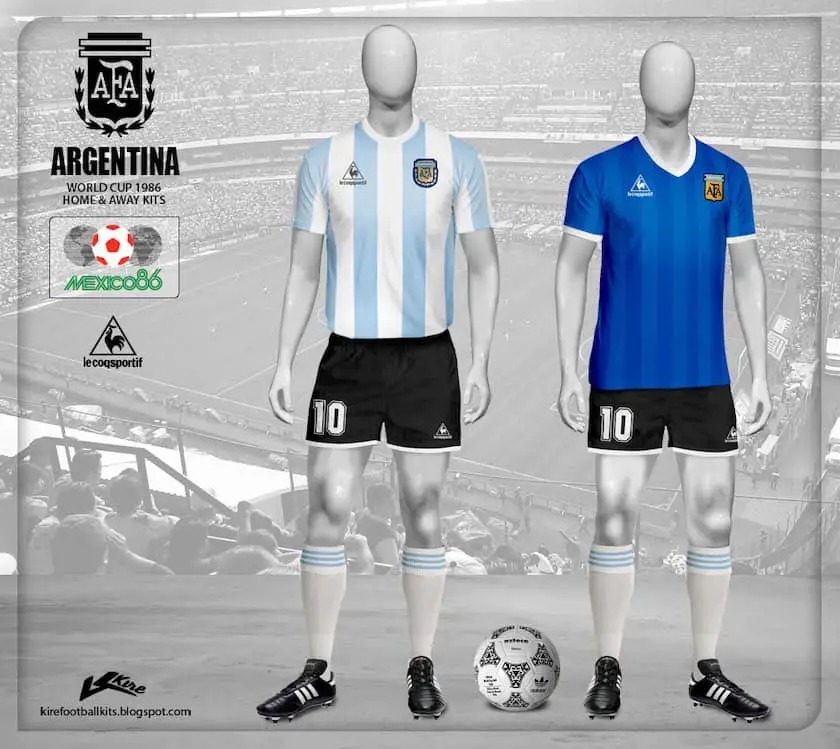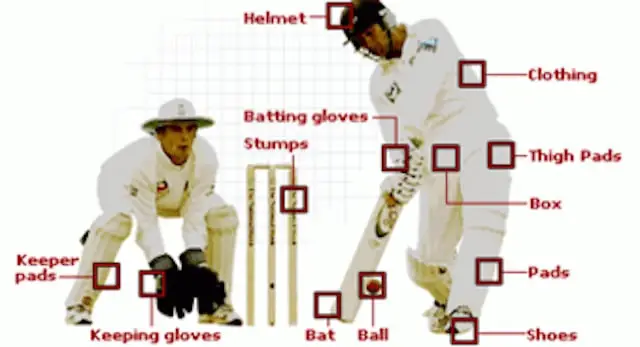While playing or watching various sports, it is natural for one to register differences or similarities among them. Some similarities and differences are subtle, while some are more prominent and the key distinguishers between the sports. Have you ever wondered if there are any similarities between cricket and football? Or what are the key factors that fundamentally separate football from cricket?
Cricket and Football are both field games and team sports, and both consist of 11 players-a-side. However, key differences between Cricket and Football include the field’s shape and size, ball size and hardness, type of protective gear used, and the lack of a goalpost in cricket and stumps in Football.
While you must be knowing the basics of both the games, the following article presents quite a few key differences between football and cricket while highlighting some similarities as well!
The Differences between Cricket and Football
To begin with, let’s first look at the major differences between Football and Cricket.
1. Popularity, Playing Countries, and Viewership
Football, also known as Soccer (mainly in America) or Association Football, is the most popular game going by the viewerships across the world. FIFA World Cup, the most prominent football tournament was followed by 3.5 billion fans in the year 2018. Almost all countries play football.
Cricket, the second most followed game has a vast global reach as well, but international cricket matches are played among a handful of countries.
At present, there are only 12 teams who have got the affiliation to play Test matches, while 20 countries play One-Day International matches. Though, the Twenty-20 format is gaining popularity and global reach, as 85 countries play Twenty-20 games.
Cricket has approximately 2.5 billion fans. The Cricket World Cup last played in 2019 was watched by about 2.6 billion people.
| Rank | Sport | Estimated Fans | Popularity by Regions |
| 1. | Association Football (Soccer) | 3.5 Billion | Africa, America, Asia, Europe. |
| 2. | Cricket | 2.5 Billion | Asia, Australia, Europe |
| 3 | Basketball | 2.2 Billion | Africa, America, Australia, Japan. |
| 4. | Hockey | 2 Billion | America, Asia, Australia, Europe. |
| 5. | Tennis | 1.2 Billion | America, Asia, Europe. |
| 6. | Volleyball | 900 Million | America, Asia, Australia, Europe. |
| 7. | Table Tennis | 850 Million | Africa, America, Asia, Europe. |
| 8. | Baseball | 500 Million | America, Japan. |
| =9 | Rugby | 400 Million | Africa, America, Asia, Australia, Europe |
| =9 | American Football | 400 Million | America |
2. Ground Shape and Size
The football field or a football pitch is rectangular, while the cricket field is generally circular or oval. The field area of both sports is not of fixed size.

The size of the football field varies between 100-130 yards (90-120 meters) long and 50-100 yards (45-90 meters) wide. Irrespective of the size of the field, the penalty area or the box, where most of the action takes place, is 18 yards (16.46 meters) away from the center of the goal line, while the penalty spot is 12 yards (10.98 meters) from the goal.

The diameter of a cricket field varies between 137 meters and 150 meters as per the ICC Test Match Standard Playing Conditions (October 2014) Law 19.1. The law states the distance from the boundary-to-boundary square of the pitch should be at least 137.16 meters, while the shorter of the two square boundaries cannot be less than 59.43 meters. The straight boundary at both ends of the pitch should be at least 64 meters. Also, the boundaries cannot exceed 82.29 meters from the center of the pitch.
3. Uniform and Color
In football, the players wear a shirt with sleeves, shorts, socks, and shoes. The cloth colors of the playing teams must be in contrast to clearly identify the players of the same team from the opponents. Hence, the teams usually have multiple sets of color clothes, and use a particular set according to the game rules.

In cricket, clothing includes a collared shirt with short or long sleeves depending on the climate or personal preference and full-length trousers, sun hat or cap, spiked shoes. The players can use a jumper or a pullover. The Test matches are played with white clothes, while limited over games are played with colorful clothes.

4 – Protective Equipment and Playing Gear
To play cricket, you primarily need a bat, a ball, and stumps, while football is played with a ball, bigger and softer compared to a cricket ball. In cricket, batsmen hit the ball with the wooden bat to score runs, while in football, the players score goals by pushing the ball into the goalpost using any body parts other than hands.
Difference in Material and Dimensions of the Ball used
The football balls are spherical, made up of synthetic leather. As per law 2 of FIFA, the balls used for professional matches have a circumference between 68 cm (27 inches) and 70 cm (28 inches), the diameter of 22 cm (8.65 inches). It weighs between 410 grams to 450 grams.
The cricket balls are made from leather, Cork, and a stitching thread. For men’s Cricket, the diameter of a Cricket ball is between 7.13 cm (2.80 inches) to 7.29 cm (2.86 inches), and its circumference is between 22.4 cm (8.81 inches) to 22.9 cm (9 inches). It weighs between 155.9 grams to 163 grams.
Protective Equipment

In cricket, batsmen, wicketkeepers, and some close-in fielders wear various protective equipment. They mainly include helmets, leg pads, gloves, jockstraps, and certain guards are among the key protective equipment.

In football, the players wear stockings, shin guards, sliding shorts, mouth guards, protective cups, knee and elbow pads, padded soccer pants, soccer gloves, and protective headgear, on top of the soccer jersey, shorts, and shoes.
The basic soccer equipment: Image credit
5 – Playing and Scoring Formats
A typical football match is played in two halves of 45 minutes each. At the end of each half, a few minutes of stoppage time (injury time) is added. The team that posts the most goals at the end of the match wins the match.
If both the teams have equal goals at the end, then depending on the rules of the competition, the result can be decided by the extra time of 30 minutes or a penalty shoot-out. It’s typically the game of attack versus defense, or attacker’s kick shot or shot versus goalkeeper’s dive and save.
Cricket is all about runs and wickets, bowlers versus batsmen. Here, bowlers deliver balls to the batsman to get him out or restrain him from scoring runs, while the opponent batsmen try to hit the balls and score runs.
In limited-over formats (50 overs in One-Day matches/20 overs in Twenty-20 matches), the team batting first posts some runs called as the target. If the other side achieves the target in the designated overs, then they win the match.
In the case of Test matches, both the sides bat twice, and play for five days. There is no limitation in terms of overs.
Unlike football, only the bowling side has all their 11 players on the field in cricket, and only two batsmen stay on the field from the batting side. Other players and substitutes follow the game from the dressing room or the dugout.
6 – The Rule of Substitutes
You must have noticed a substitute player in football scoring a goal, goalkeeping, or even captaining the side. In FIFA 2014 world cup final, Mario Gotze who was brought in as a substitute in the 88th minute scored the world championship-winning goal in the 113th minute.
In cricket, substitutes are not allowed to bowl, bat, wicket keep or captain the side. They can only field and replace an injured player. The original player can return to the game as soon as recovered from the injury.
7 – Red/Yellow Penalty Cards

This is one of the major differences between the two sports. Yellow and red cards are used in football to discipline players for their misconduct during the game.
A yellow card is used as a warning for minor misconduct, while a red card results in the player’s dismissal from the field of play, and the side is forced to play with a player less. Also, if a player receives two yellow cards in one game, it is as good as receiving a red card.
Though in cricket the players are fined for their misconducts, there was no penalty card system till 2017. In 2017, a new law was introduced to empower umpires to show red cards to a cricketer in case of some serious misconducts like threatening an umpire, physically assaulting another player, umpire, official, or spectator, or any other act of violence on the field of play. There are no yellow penalty cards in cricket.
What are the Similarities between Cricket and Football?
Yes, there are a few similarities between the two sports. Cricket and Football are the two most popular sports in the world. Both are outdoor or field games.
Both are team games with 11 players a side actively playing in the match. Use of the toss, balls, substitute players, keepers (goalkeeper and wicketkeeper) who save or grab the ball using gloves are among the other similarities.
The referees in football are similar to umpires in cricket. In football, there is one referee and two assistant referees, while in cricket we have two field umpire and one television-umpire or the third umpire.
Final Thoughts
Cricket is called a gentlemen’s game while football can get very rough at times. That’s the inherent nature of both the games. Though played in fewer countries, cricket has gathered tremendous viewership and fan-following over time, mainly from the Indian sub-continent, England and Australia.
While the legendary batsman Sachin Tendulkar is treated like a god by cricket fans, Lionel Messi or Cristiano Ronaldo have got incredible popularity and respect through football. Players like these contribute to the increase in the worldwide popularity of any sports to a great extent. No wonder these are the two most followed sports across the globe!


